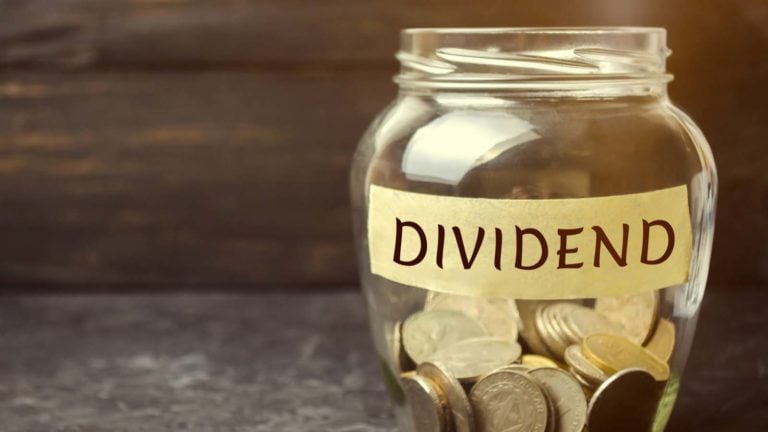During times of economic recessions or geopolitical turmoil, safe dividend stocks continue to outperform riskier securities. Quality dividend stocks offer investors steady income to buffer against falling stock prices, while also offering lower volatility than growth stocks.
In this article, we’ll take a look at three of the safest Dividend Aristocrats with dividends built to last.
T. Rowe Price Group (TROW)

T. Rowe Price (NASDAQ:TROW) provides a wide array of asset management products and services to individuals, retirement plans, institutional investors and more. T. Rowe offers equity and fixed income mutual funds with a bottom-up approach to finding the best securities. The firm generates almost $8 billion in annual revenue.
On May 2, T. Rowe Price reported first-quarter results for the period ending March 31. For the quarter, revenue fell 17.2% to $1.54 billion, but this was in-line with estimates. Adjusted earnings per share (EPS) of $1.69 were 6 cents higher than expected. During the quarter, assets under management (AUM) declined 15.2% to $1.323 trillion.
The stock also has a 37-year history of rising dividends, putting T. Rowe in fairly rare company on that measure. Further, the increases the company has produced have been extremely meaningful, with the 10-year compound annual growth rate (CAGR) of the dividend coming in at more than 10%.
During the Great Recession, T. Rowe posted EPS of $2.40, $1.82, $1.65 and $2.53 in the stretch between 2007 and 2010 stretch. This is instructive, as it shows both the cyclical nature in lesser times along with the ability to bounce back. The company’s balance sheet is in excellent shape with zero long-term debt.
The current payout of $4.80 per share is good for a 4.4% dividend yield, well ahead of the broader market as measured by the S&P 500.
Genuine Parts Company (GPC)

Genuine Parts Company (NYSE:GPC) is a diversified retailer of replacement automotive parts, industrial parts and materials. Genuine Parts operates the well-known NAPA Auto Parts chain of retailers, counting individuals and repair shops among its customer base. Through this chain, it distributes thousands of tools and replacement parts for all kinds of motor vehicles. It also operates office supply and industrial supply businesses that help diversify the company’s revenue streams.
Genuine Parts posted first-quarter earnings on April 20, and results were better than expected on both revenue and profits. The company posted EPS of $2.14, which was 9 cents better than expected. Revenue was up 9.4% year-over-year to $5.8 billion. That was $120 million better than estimates. Sales were driven by an 8.7% gain in comparable sales, a 2.4% benefit from acquisitions, and a 2.2% headwind from a net unfavorable impact of forex translation.
The company offered up a guidance hike for the year, slightly raising EPS from $8.95 to $9.10, up 15 cents on both the bottom and top of the range. Cash from operations is now expected to be $1.3 billion to $1.4 billion. Additionally, revenue is expected to rise 4% to 6%.
Genuine Parts has one of the best dividend streaks of any company in the world, sporting a 67-year streak of rising payouts to shareholders. Genuine Parts’ payout ratio has been quite steady between 50% and 60% of earnings for many years, but is below that today. Its competitive advantages include its wide array of industries and customers served, geographic reach and the fact that it sells what amount to industrial staples.
The dividend has increased at an average rate of 6% over the past 10 years, which is in line with earnings growth. This also boosts sustainability of future increases. The stock yields 2.3%.
Procter & Gamble (PG)

Founded in 1837 and headquartered in Cincinnati, Ohio, Procter & Gamble (NYSE:PG) is a consumer products giant. It sells its products in over 180 countries. Notable brands include Pampers, Luvs, Tide, Gain, Bounty, Charmin, Puffs, Gillette, Head & Shoulders, Old Spice, Dawn, Febreze, Swiffer, Crest, Oral-B, Scope, Olay and many more.
Procter & Gamble has paid a dividend for 133 years and has grown its dividend for 67 consecutive years — one of the longest active streaks of any company. In April, Procter & Gamble raised its dividend by 3%, from 91.33 cents per quarter to 94.07 cents.
In late April, Procter & Gamble reported financial results for the third quarter of fiscal 2023. The company grew its sales and its organic sales by 4% and 7%, respectively, over the prior year’s quarter. Organic sales growth resulted from 10% price hikes, which were partly offset by a -3% decrease in volumes. Despite the strong headwind from high inflation, gross margin expanded by 150 basis points and adjusted EPS grew 3% thanks to price hikes.
The company raised its guidance for growth of organic sales in fiscal 2023 from 4%-5% to 6% and reiterated its guidance for 0%-4% growth of EPS. Procter & Gamble has grown its EPS by 4.1% per year on average over the last decade. The company underwent a major transformation in which it sold a significant number of low-margin, low-growth brands. It reduced its brand count from about 170 to 65. This allowed it to focus on its strongest, most profitable brands moving forward.
With a dividend payout ratio of 63%, the dividend is highly safe. The company also has a highly recession-resistant business model due to the staples products it sells. These brands provide Procter & Gamble with pricing power and consistent profits, in good times or bad. During the Great Recession, the company posted EPS of $3.04, $3.64, $3.58, $3.53 and $3.93 in the stretch between 2007 and 2011, while the dividend kept on rising. The stock currently yields 2.5%.
On the date of publication, Bob Ciura did not hold (either directly or indirectly) any positions in the securities mentioned in this article. The opinions expressed in this article are those of the writer, subject to the InvestorPlace.com Publishing Guidelines.
